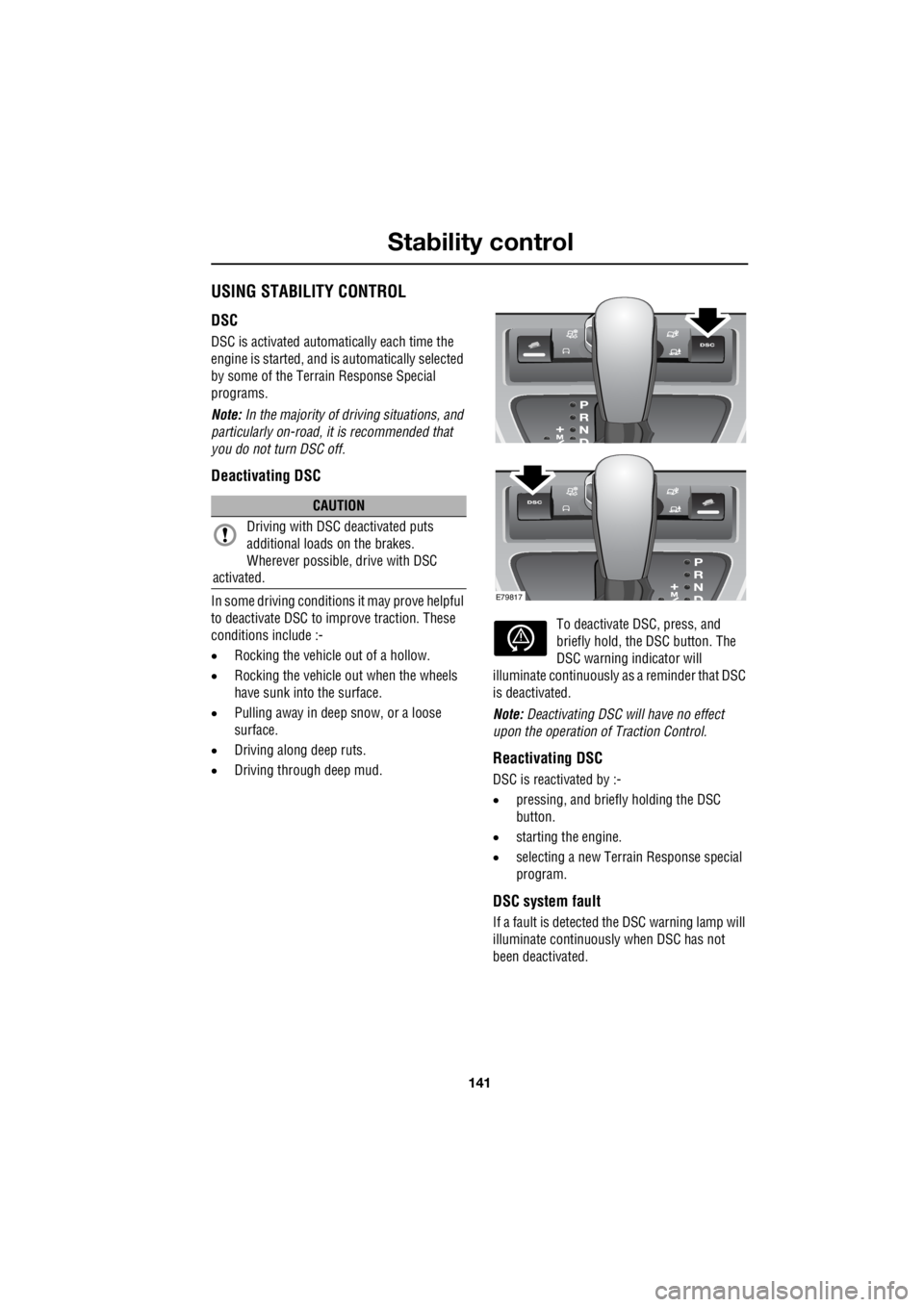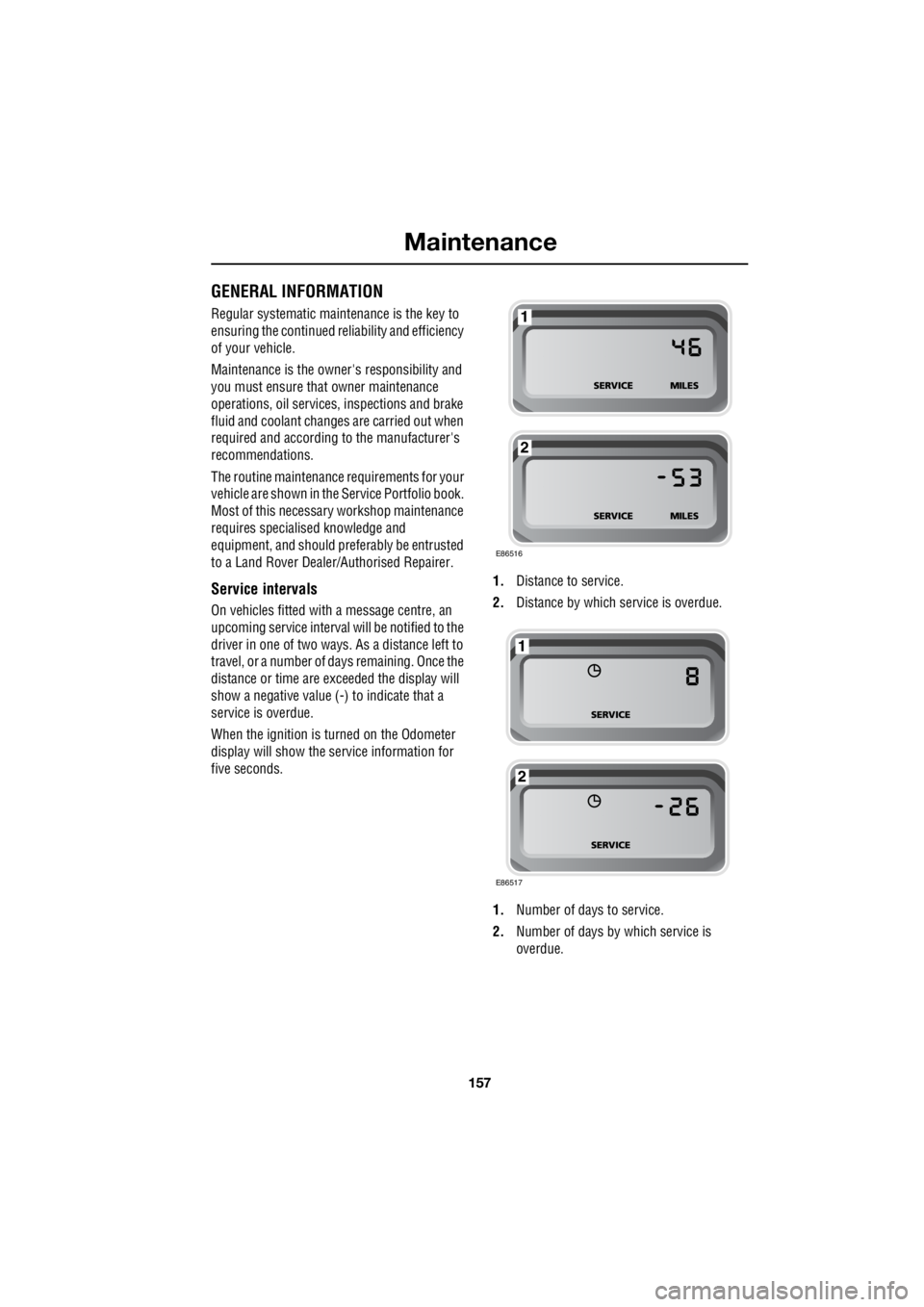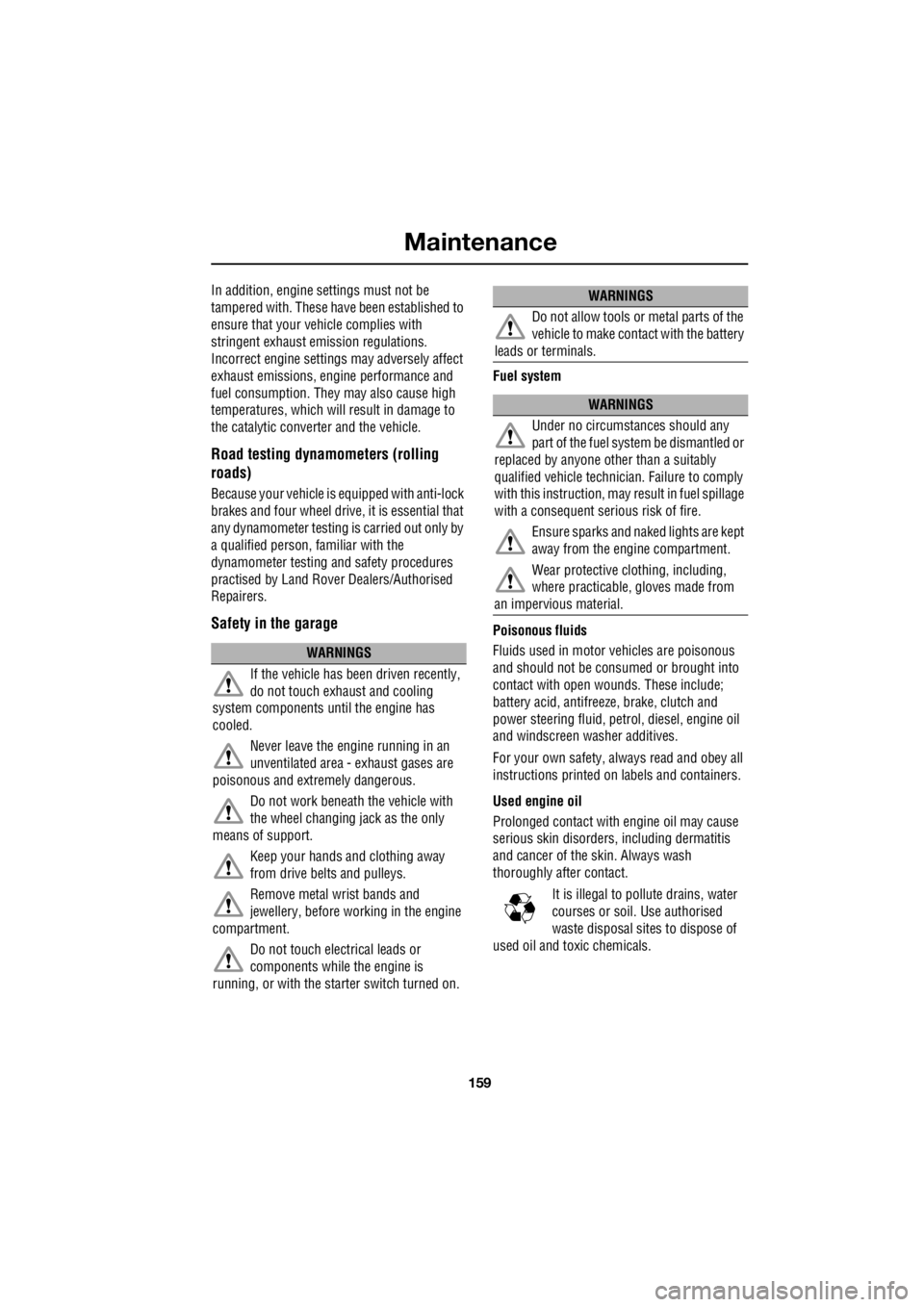2006 LAND ROVER FRELANDER 2 brake
[x] Cancel search: brakePage 2856 of 3229

Hill descent control (HDC)
136
L
Hill descent control (HDC)PRINCIPLE OF OPERATION
HDC operates in conjunction with ABS to
provide greater control when off-road,
particularly when desc ending steep slopes.
HDC operation is fully automatic when
engaged.
During a hill descent when driving off-road,
engine braking is used to control the speed of
descent. If engine braki ng alone is insufficient
to control the vehicle's speed, HDC will slow
the vehicle using the braking system. HDC will
control the descent speed relative to the gear
selected and accelerator position.
If the vehicle is fitted with a manual
transmission, HDC should onl y be used in first,
or reverse gears. If the vehicle is fitted with an
automatic transmission, HDC should only be
used in D, R , or CommandShift 1. When in D
the vehicle will select the most appropriate
gear.
Note: HDC is automatically selected by some
of the Terrain response special programs.
Gradient release control (GRC)
With HDC activated, if the vehicle is stopped on
a slope using the footbrake, GRC will become
active. When the footbrake is released GRC will
automatically delay the brake release to allow
take up of drive, and build up of engine torque.
The brakes will then gradually release to allow
the vehicle to move smoothly away under the
control of HDC.
GRC operates in forwar d and reverse, and
requires no driver intervention.
Before driving off-road
Before venturing off-road it is absolutely
essential that inexperi enced drivers become
fully familiar with the vehicle's controls. In
particular, CommandShift , Hill Descent Control
(HDC), and the Terra in Response system.
Basic information and off-road driving
techniques can be found in the off-road driving
handbook available on-line at
http://www.ownerinfo.landrover.com
Off-road driver traini ng should be undertaken
by anyone intending to drive off-road. Training
is available at your nearest Land Rover
Experience centre. More details can be found at
http://www.landroverexperience.com
Page 2858 of 3229

Hill descent control (HDC)
138
L
If the brake pedal is de pressed, HDC will be
overridden and the br akes will operate as
normal. When the brake pedal is released, HDC
will resume control of the descent.
If HDC is switched off during a descent, HDC
assistance will fade out gradually. This is to
prevent loss of control if HDC is switched off in
error. HDC will resume control when switched
back on if assistance is still required, but at the
speed the vehicle is travelling when the pedal is
released.
When driving off-road HDC can be permanently
selected, but it will only provide assistance
when the speed parameters are met.
Warning messages
Brake temperature
In extreme circumstances, the HDC system
may cause brake temperatures to exceed their
pre-set limits. If this occurs the warning
message HDC TEMPORARILY NOT
AVAILABLE SYSTEM COOLING will be
displayed in the message centre. HDC will then
fade out and become temporarily inactive.
If the vehicle is not fitted with a message
centre, then the amber HDC warning indicator
will flash.
HDC will remain unavaila ble until the brakes
reach an acceptable temperature. Once the
brakes have reached an acceptable
temperature, the message will disappear (or
the warning indicator wi ll extinguish) and HDC
will, if required, resume operation. System fault
If a fault is detected in the HDC system, HDC
FAULT SYSTEM NOT AVAILABLE will appear in
the message centre.
If the vehicle is not fitted with a message centre
the amber HDC warning indicator will
illuminate.
If the fault is detected whilst the system is
operating HDC assistance will fade out.
If a fault is detected, contact you Land Rover
Dealer/Authorised Repairer as soon as
possible.
WARNING
Do not attempt a steep descent if HDC
is inoperative, or wa rning messages are
displayed.
Page 2859 of 3229

139
Traction control
R
Traction controlUSING TRACTION CONTROL
Electronic Traction Control (ETC)
ETC operates in conjunction with Dynamic
Stability Control (DSC) and is designed to
assist when one, or more, wheels have lost
traction.
If a wheel looses tracti on, ETC will operate the
brake on that wheel until it regains traction.
Warning indicator If a fault is detected within the ETC
system the warning indicator will
illuminate.
Before driving off-road
Before venturing off-ro ad it is absolutely
essential that inexperienced drivers become
fully familiar with the vehicle's controls. In
particular, CommandShift , Hill Descent Control
(HDC), and the Terrain Response system.
Basic information a nd off-road driving
techniques can be found in the off-road driving
handbook available on-line at
http://www.ownerinfo.landrover.com
Off-road driver traini ng should be undertaken
by anyone intending to drive off-road. Training
is available at your nearest Land Rover
Experience centre. More details can be found at
http://www.landroverexperience.com
Page 2861 of 3229

141
Stability control
R
USING STABILITY CONTROL
DSC
DSC is activated automatically each time the
engine is started, and is automatically selected
by some of the Terrain Response Special
programs.
Note: In the majority of dr iving situations, and
particularly on-road, it is recommended that
you do not turn DSC off.
Deactivating DSC
In some driving conditions it may prove helpful
to deactivate DSC to improve traction. These
conditions include :-
• Rocking the vehicle out of a hollow.
• Rocking the vehicle out when the wheels
have sunk into the surface.
• Pulling away in deep snow, or a loose
surface.
• Driving along deep ruts.
• Driving through deep mud. To deactivate DS
C, press, and
briefly hold, the DSC button. The
DSC warning indicator will
illuminate continuously as a reminder that DSC
is deactivated.
Note: Deactivating DSC will have no effect
upon the operation of Traction Control.
Reactivating DSC
DSC is reactivated by :-
• pressing, and briefly holding the DSC
button.
• starting the engine.
• selecting a new Terra in Response special
program.
DSC system fault
If a fault is detected the DSC warning lamp will
illuminate continuously when DSC has not
been deactivated.
CAUTION
Driving with DSC deactivated puts
additional loads on the brakes.
Wherever possible, drive with DSC
activated.
E79817
Page 2872 of 3229

Towing
152
L
RECOMMENDED TOWING WEIGHTS
Note: When towing the maximum permissible
gross vehicle weight can be increased by a
maximum of 100 kg (220 lbs) provided that the
road speed is limited to 100 km/h (60 mph).
Note: When calculating rear axle loading,
remember that the trailer nose weight, the load
in the vehicle's luggage area, weight on the
roof rack, and the weight of rear seat
passengers must all be added together.
Maximum permissible towing
weights On-road Off-road
Unbraked trailers 750 kg (1650 lbs) 750 kg (1650 lbs)
Trailers with overrun brakes 2000 kg (4400 lbs) 750 kg (1650 lbs)
Nose weight 150 kg (330 lbs) 150 kg (330 lbs)
WARNING
Do not exceed the Gross Vehicle
Weight (GVW), maximum rear axle
weight, maximum trai ler weight, or nose
weight. Exceeding any of these limits could
cause instability and lo ss of control. See
WEIGHTS (page 212).
Page 2877 of 3229

157
Maintenance
R
MaintenanceGENERAL INFORMATION
Regular systematic maintenance is the key to
ensuring the continued re liability and efficiency
of your vehicle.
Maintenance is the owne r's responsibility and
you must ensure that owner maintenance
operations, oil services, inspections and brake
fluid and coolant changes are carried out when
required and according to the manufacturer's
recommendations.
The routine maintenance requirements for your
vehicle are shown in the Service Portfolio book.
Most of this necessar y workshop maintenance
requires specialised knowledge and
equipment, and should preferably be entrusted
to a Land Rover Dealer/Authorised Repairer.
Service intervals
On vehicles fitted with a message centre, an
upcoming service interval will be notified to the
driver in one of two ways. As a distance left to
travel, or a number of da ys remaining. Once the
distance or time are ex ceeded the display will
show a negative value (-) to indicate that a
service is overdue.
When the ignition is turned on the Odometer
display will show the service information for
five seconds. 1.
Distance to service.
2. Distance by which service is overdue.
1. Number of days to service.
2. Number of days by which service is
overdue.
E86516
1
2
E86517
1
2
Page 2878 of 3229

Maintenance
158
L
One or both types of serv ice interval (distance
and time) may be displayed. For example, if an
engine oil service is du e based on mileage, and
a brake fluid change is due based on time, both
distance and time c ountdowns will display.
Service Portfolio
The Service Portfolio book includes a Service
Record section, which enables a record to be
kept of all the servicing and inspections that are
carried out on the vehicle. This section of the
book also has an area for brake fluid changes
to be recorded.
Ensure your service provider signs and stamps
the book after each se rvice and inspection.
Owner Maintenance
In addition to the routine maintenance, a
number of simple checks must be carried out
more frequently. Advice is given on the pages
that follow.
Daily checks
• Operation of lamps, horn, direction
indicators, wipers, washers and warning
indicators.
• Operation of seat belts and brakes.
• Look for fluid deposits underneath the
vehicle that might indicate a leak.
Weekly checks
• Engine oil level. See ENGINE OIL CHECK
(page 162).
• Engine coolant check. See ENGINE
COOLANT CHECK (page 163).
• Brake/clutch fluid level. See BRAKE AND
CLUTCH FLUID CHECK (page 165). •
Power steering fluid level. See POWER
STEERING FLUID CHECK (page 166).
• Screen washer fluid level. See WASHER
FLUID CHECK (page 167).
• Tyre pressure s and condition.
• Operate air conditioning.
Note: The engine oil leve l should be checked
more frequently if the vehicle is driven for
prolonged periods at high speeds.
Driving in arduous conditions
When a vehicle is operated in extremely
arduous conditions, more frequent attention
must be paid to servicing requirements.
For example, if your vehicle experiences deep
wading conditions, even daily servicing could
be necessary to ensure the continued safe and
reliable operation of the vehicle.
Arduous driving conditions include:
• Driving in dusty and/or sandy conditions.
• Driving on rough and/or muddy roads
and/or wading.
• Driving in extremely hot conditions.
• Towing a trailer or driving in mountainous
conditions.
Contact a Land Rover Dealer/Authorised
Repairer for advice.
Emission control
Your vehicle is fitted with various items of
emission and evaporative control equipment,
designed to meet sp ecific territorial
requirements. You should be aware that
unauthorised replacemen t, modification or
tampering with this equipment by an owner or
repair shop, may be unlawful and subject to
legal penalties.
CAUTION
Any significant or sudden drop in fluid
levels, or uneven tyre wear, should be
reported to a qualified technician without
delay.
Page 2879 of 3229

159
Maintenance
R
In addition, engine se ttings must not be
tampered with. These have been established to
ensure that your vehicle complies with
stringent exhaust em ission regulations.
Incorrect engine settings may adversely affect
exhaust emissions, engi ne performance and
fuel consumption. The y may also cause high
temperatures, which will result in damage to
the catalytic converter and the vehicle.
Road testing dynamometers (rolling
roads)
Because your vehicle is equipped with anti-lock
brakes and four wheel drive, it is essential that
any dynamometer testing is carried out only by
a qualified person, familiar with the
dynamometer testing an d safety procedures
practised by Land Rove r Dealers/Authorised
Repairers.
Safety in the garage
Fuel system
Poisonous fluids
Fluids used in motor vehicles are poisonous
and should not be consumed or brought into
contact with open wounds. These include;
battery acid, antifreeze, brake, clutch and
power steering fluid, petr ol, diesel, engine oil
and windscreen washer additives.
For your own safety, al ways read and obey all
instructions printed on labels and containers.
Used engine oil
Prolonged contact with engine oil may cause
serious skin disorders, including dermatitis
and cancer of the skin. Always wash
thoroughly after contact.
It is illegal to pollute drains, water
courses or soil. Use authorised
waste disposal sites to dispose of
used oil and toxic chemicals.
WARNINGS
If the vehicle has been driven recently,
do not touch exhaust and cooling
system components un til the engine has
cooled.
Never leave the engine running in an
unventilated area - exhaust gases are
poisonous and extremely dangerous.
Do not work beneath the vehicle with
the wheel changing jack as the only
means of support.
Keep your hands and clothing away
from drive belt s and pulleys.
Remove metal wr ist bands and
jewellery, before working in the engine
compartment.
Do not touch electrical leads or
components while the engine is
running, or with the starter switch turned on.
Do not allow tools or metal parts of the
vehicle to make contact with the battery
leads or terminals.
WARNINGS
Under no circumstances should any
part of the fuel system be dismantled or
replaced by anyone other than a suitably
qualified vehicle technician. Failure to comply
with this instruction, may result in fuel spillage
with a consequent serious risk of fire.
Ensure sparks and naked lights are kept
away from the engine compartment.
Wear protective cl othing, including,
where practicable, gloves made from
an impervious material.
WARNINGS